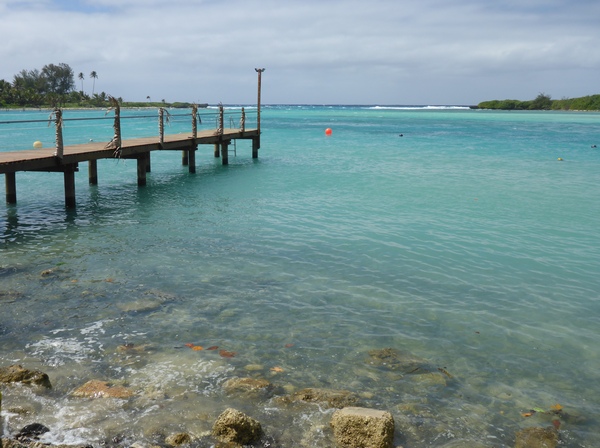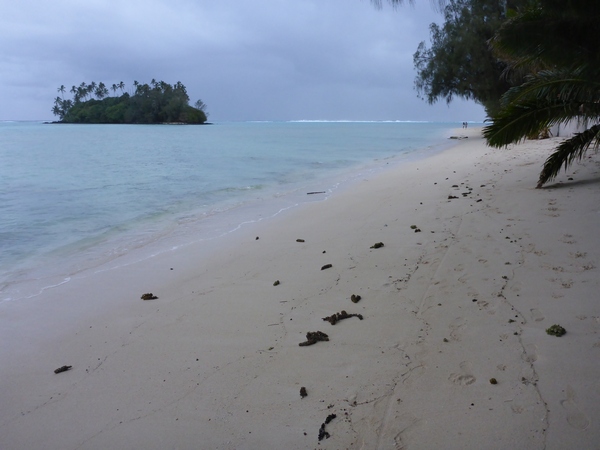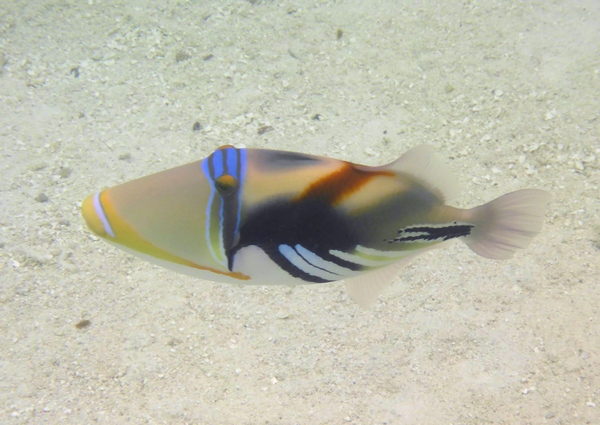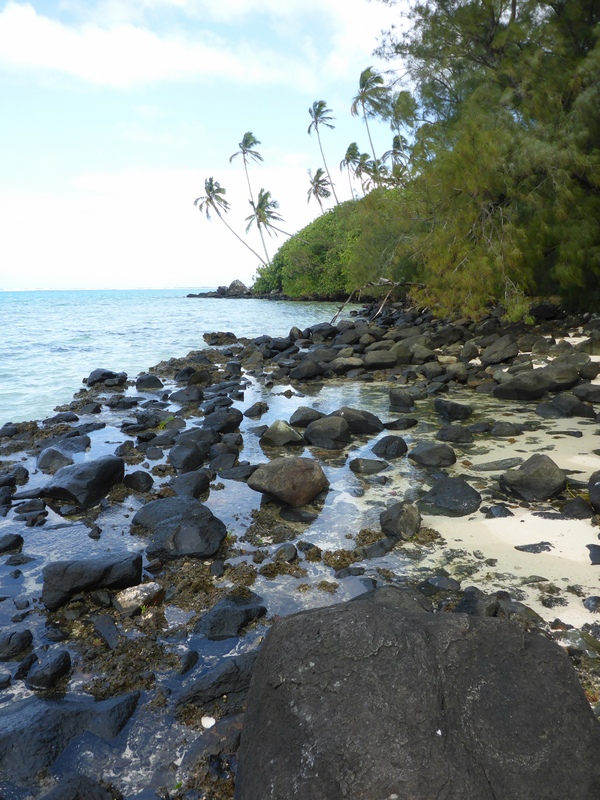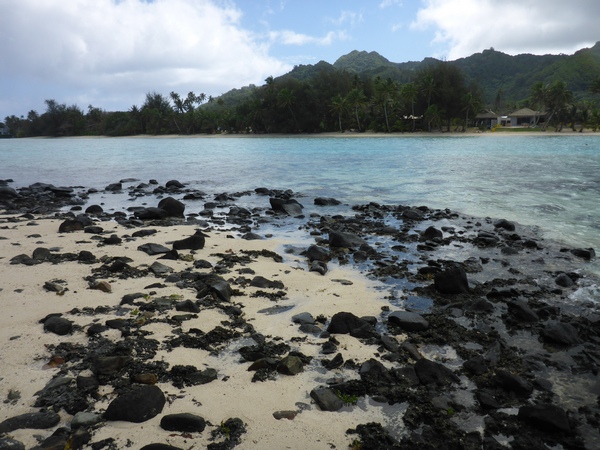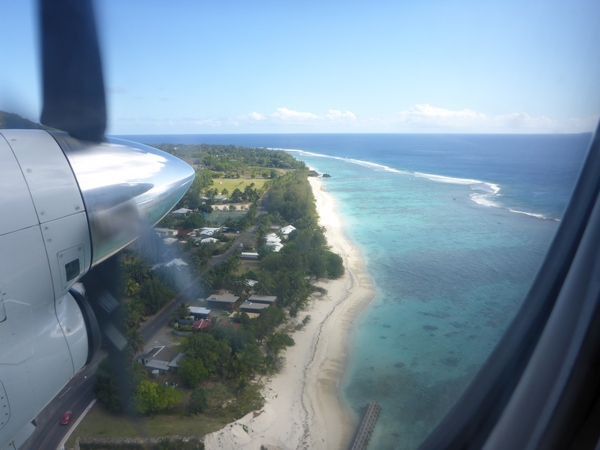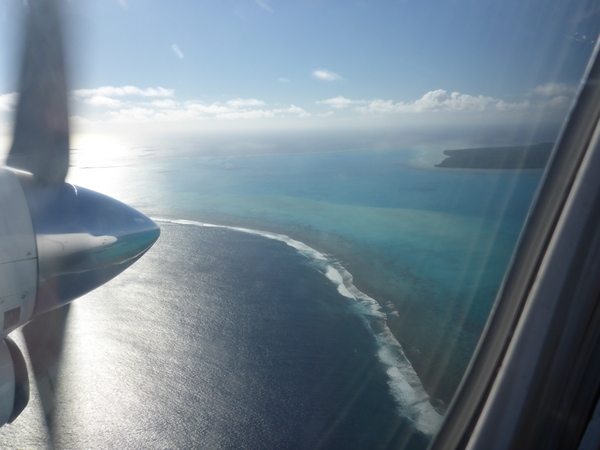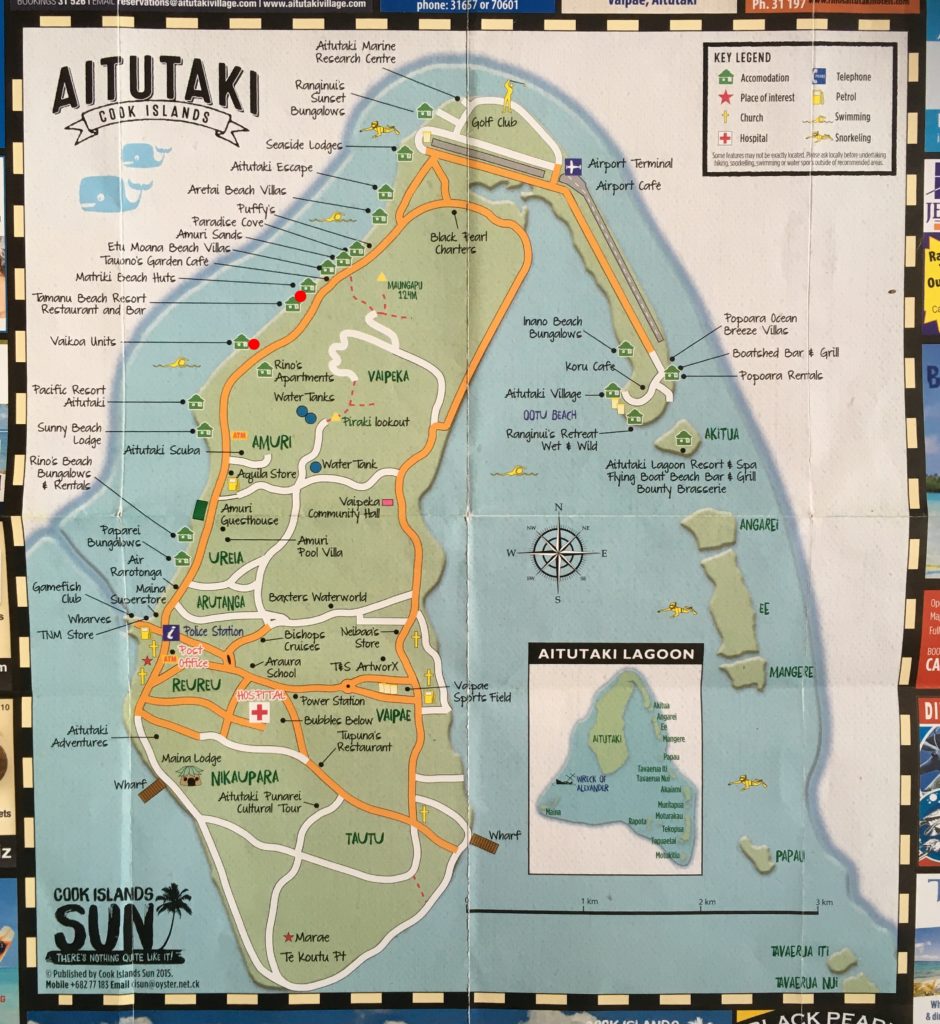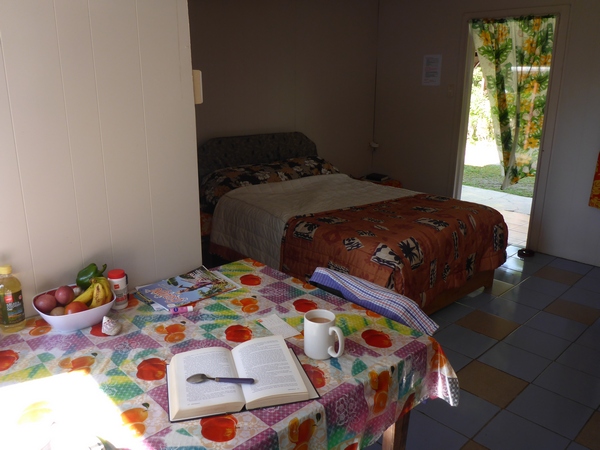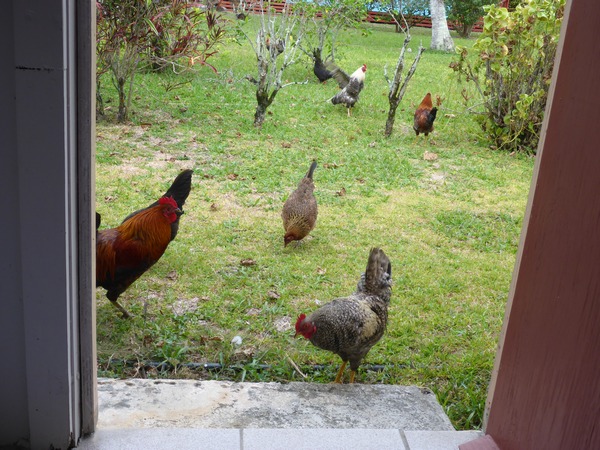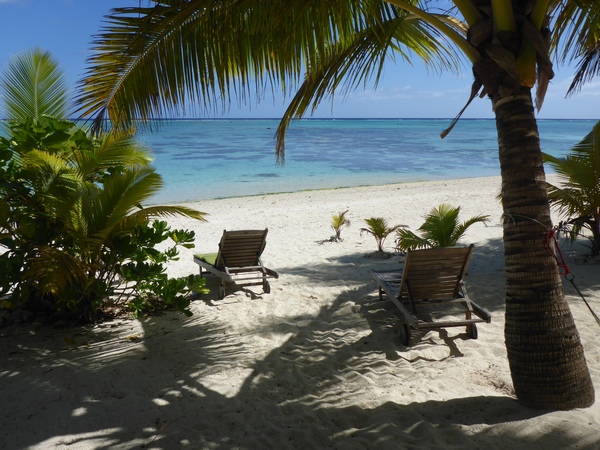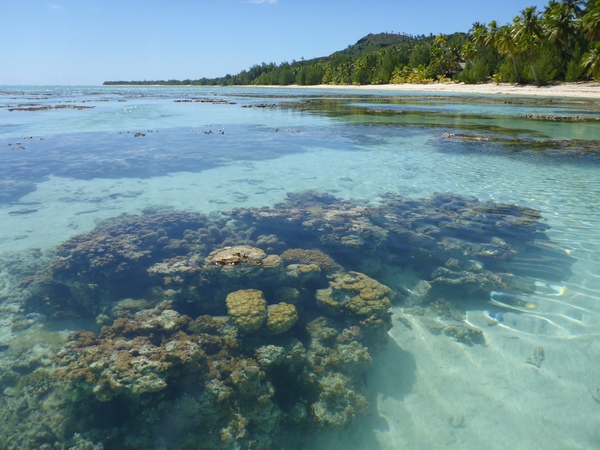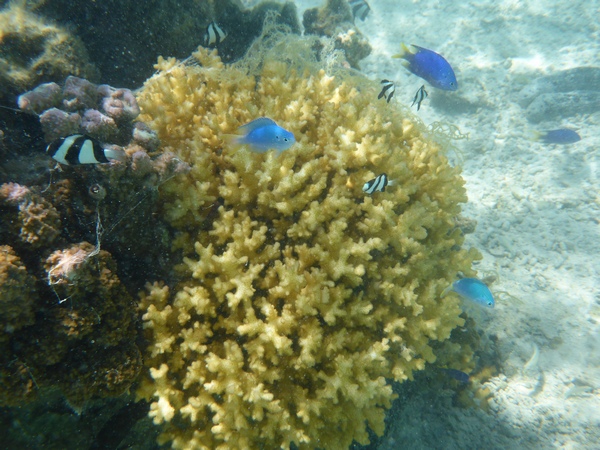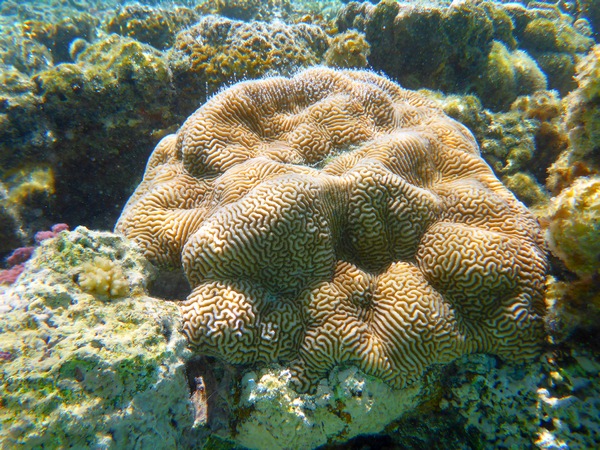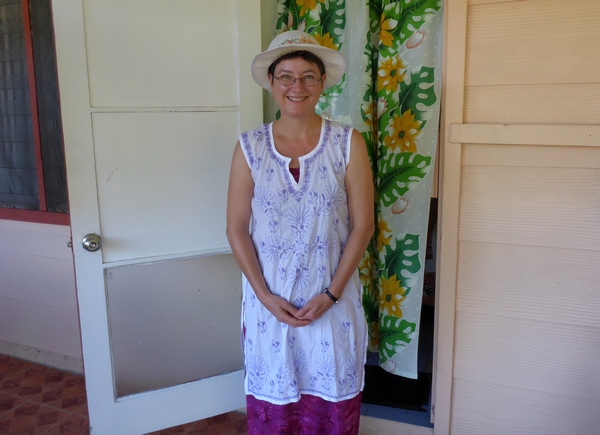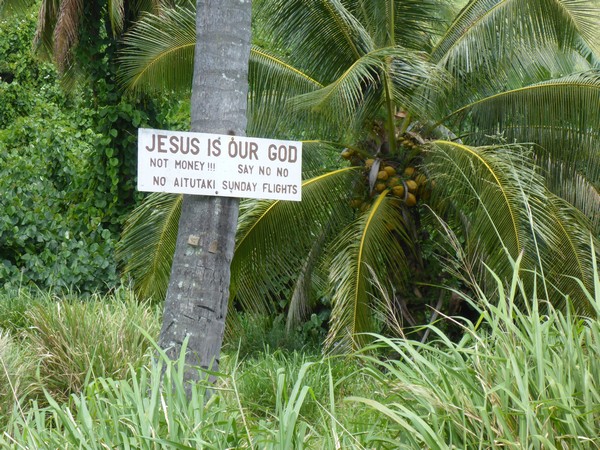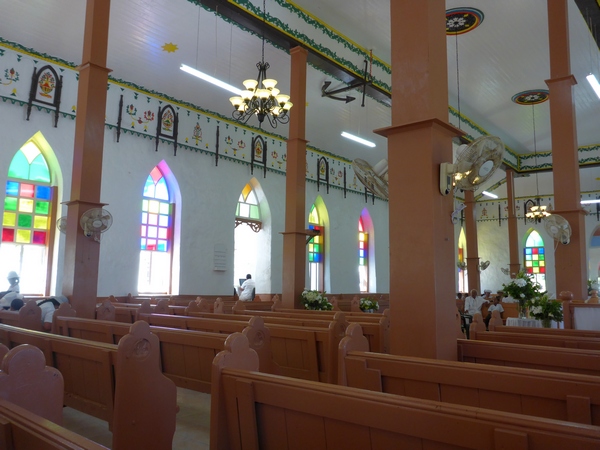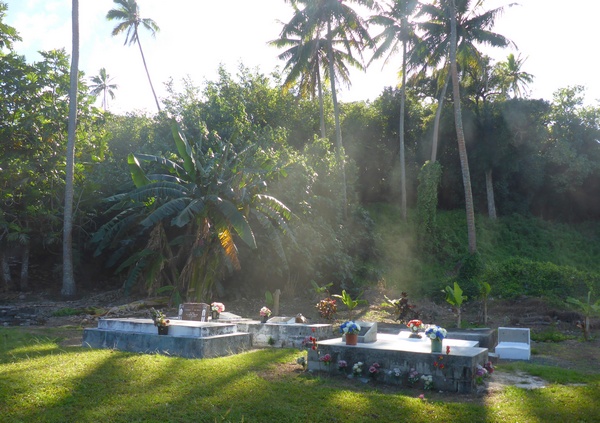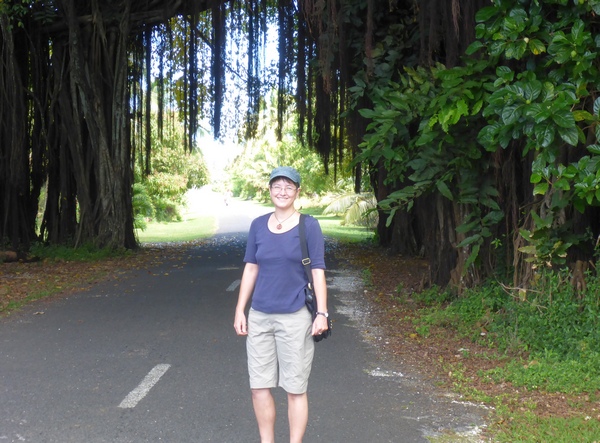(For new readers – if you’re just discovering this blog and you would like to read about my 2015 South Pacific travels from their beginning, you can click on this link to go to the first chapter: Travels in the Cook Islands.)
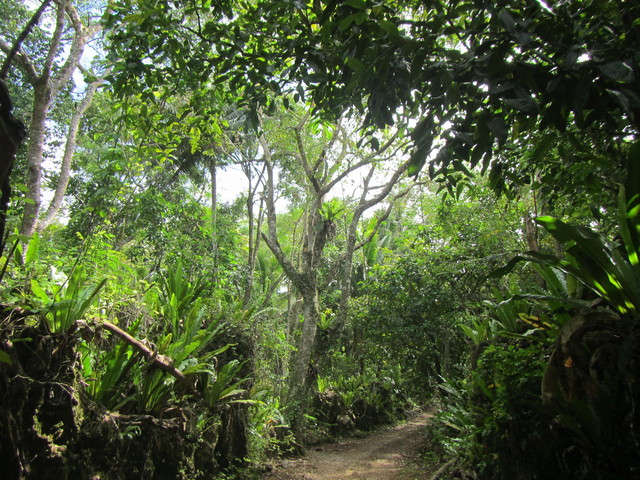
My second day on Atiu began with a gargantuan breakfast, fuel for the day’s explorations. Donna, Mark and I then jumped into Marshall’s truck and we picked up the three other tourists currently staying on the island, before heading out on a tour. First stop was the nearby village of Teenui, the closest thing that Atiu has to a busy metropolis.
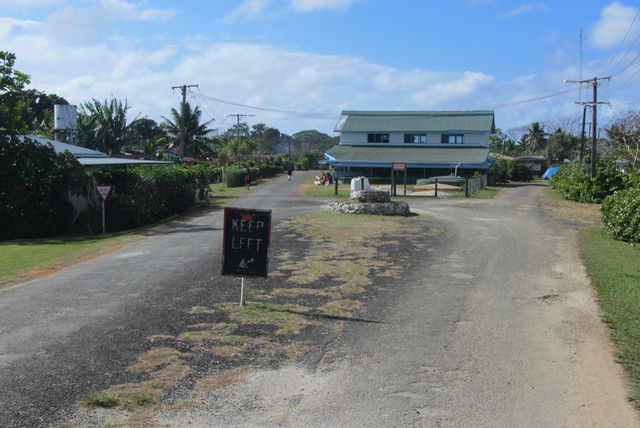
On an island with a population of around 500 people, you’re unlikely to see much other traffic (apart from chickens). Marshall gave us a tour of Teenui’s sights, starting with the recently-created sports field, which had to be redone after the island was hit by five cyclones in a single season. Climate change is likely to lead to intensified cyclone activity in the South Pacific, so this doesn’t bode well for the people who live on islands such as Atiu.

We drove past the village store, which was originally the first school on the island (built by the London Mission Society). As elsewhere in the Cook Islands, imported (mostly Christian) religions have had a big impact on local society and culture. There are six churches on Atiu, including CICC (Cook Islands Christian Church), Catholic, Seventh Day Adventists and Jehovah’s Witnesses. Atiu people can and do marry folks from different churches, although this depends on each church’s policy: not every faith allows it.
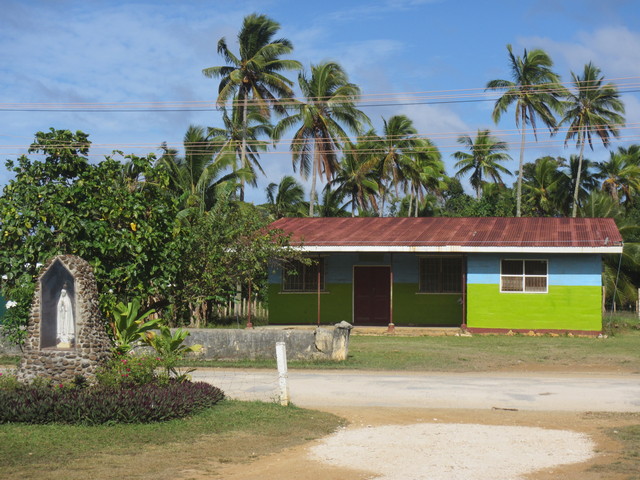
Our next stop was the island police station (which also serves as Teenui’s bank and post office). Marshall explained that there are two police officers on Atiu, and the consensus is that no crime occurs after 3pm because that’s when they go off-duty… Or on Friday afternoons, because that’s the time for fishing. I quite liked the idea of limited hours for law-breaking. Presumably having the bank attached to the police station also discourages would-be bank robbers (unless of course they decide to carry out a bank raid after 3pm).
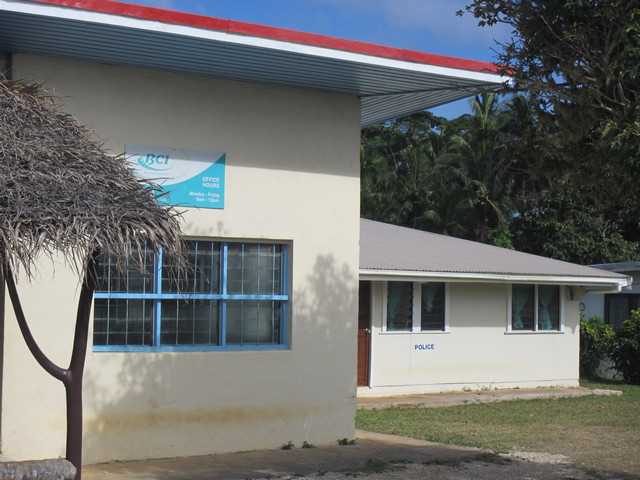
The legacy of colonial occupation can be seen in government buildings, as well as in the ubiquitous churches. Atiu’s council chamber and tax filing office (Kavamani Enua, or Island Government) are based in what used to be the old British Foreign Office building, when B.F.O. staff were posted on the island. British colonial rule from the 1880s became New Zealand colonial rule in 1901: full independence and self-governance in the Cook Islands not being achieved until 1965.
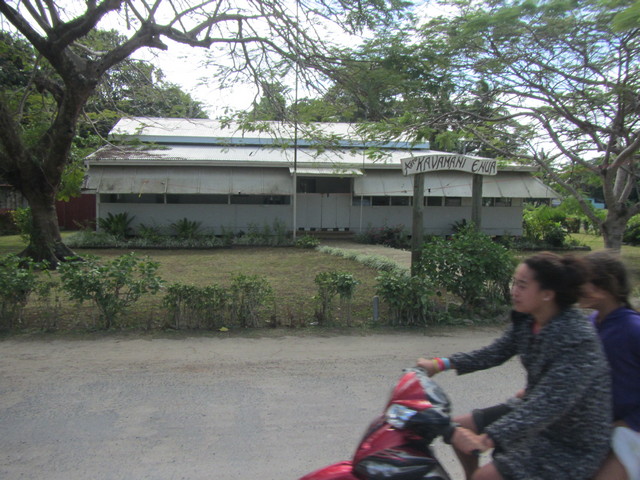
Other important buildings we saw included the CICC hall, used for singing and dancing events; and the CICC church building itself, the largest church on the island. As on Aitutaki, there were very few graves beside the church, with local people choosing to bury their deceased family at home: only incomers or strangers usually find their resting place in the church cemetery.
Next to the church a limestone obelisk called te pito, ‘the navel’, marks what is said to be the exact centre point of the island. It carries the name of Paulo Ngamaru Ariki, the Atiuan chief who helped restore the CICC church in the 1950s; and Tamaivi Ngamaru Ariki, the chief who planned and built the original church in the 1860s. There are three ariki (chiefs) on Atiu: at the time of my visit only two lived on the island, while the third resided in New Zealand. Ariki descends in family lines, but not automatically to the eldest son of the family: local worthies meet to decide who will make the best successor, when the current ariki dies.
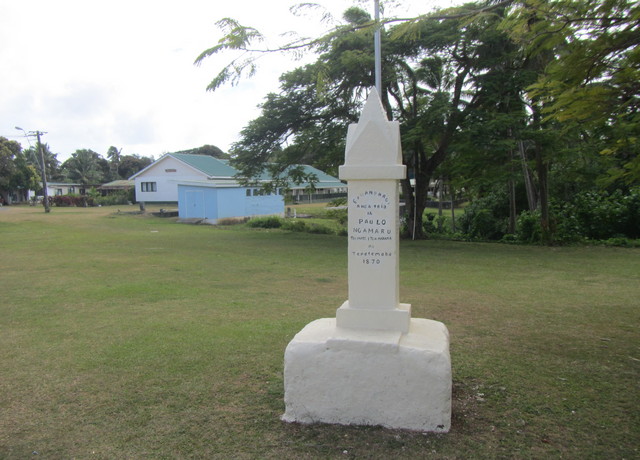
As we travelled around Teenui it was quiet: we saw the occasional local driving a pick-up or moped; children strolling or playing; and of course chickens and dogs patrolling the mostly empty roads. With the population size having reduced by two-thirds in the late twentieth century (mostly due to the decline of exports of produce such as citrus fruits, coffee and copra), community life here is small-scale but still vibrant, with regular community meetings in each of the five villages.

Heading out of Teenui our next stop was the island’s Enuamanu School, which bore a banner celebrating 50 years since the school – and Cook Islands self government – was established in 1965. All stages of education – infants, primary, secondary and college – are contained on the same site. Marshall told us that Cook Islands Maori is the first language taught in Enuamanu School and English second (unlike on Rarotonga). This prioritising of Cook Islands language seems positive, though unfortunately Atiu pupils are disadvantaged when they sit exams under the New Zealand exam system, as exams are set in English. Marshall said that for this reason he and Jéanne home-educated their children, to try to overcome this problem.
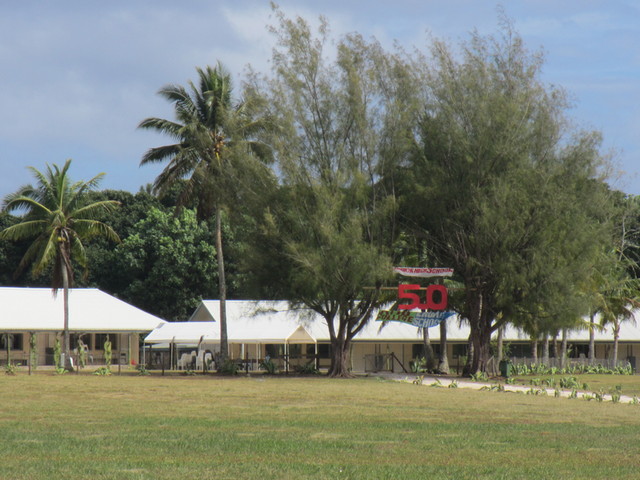
After the school our next landmark was the village bakery, complete with cement bread oven! It reminded me of the cob oven (earth oven) at Wildwood Escot where I teach in Devon: basically a simple interior oven space enclosed in thick cement walls, heated by burning firewood inside. Should any cracks form in the oven’s walls (revealed by leaking smoke), this is mended by the simple expedient of plastering more cement on the outside… Hence the resulting huge oven structure, sheltering under its corrugated iron roof.
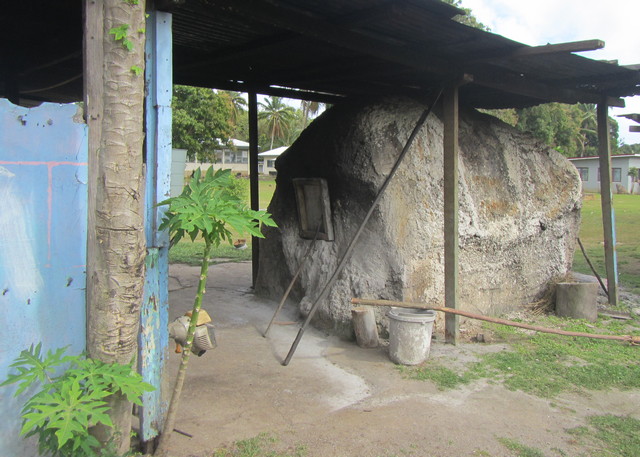
Once the wood has burned and the oven is heated, the ashes are swept out and the tins of bread dough popped inside to bake. The whole set-up is basic but practical, with the only machinery used a giant dough mixer that looked more like a cement mixer than anything else! I quite liked the minimalist kitchen (although I’m not sure what having a lawnmower stored in there added to the mix).
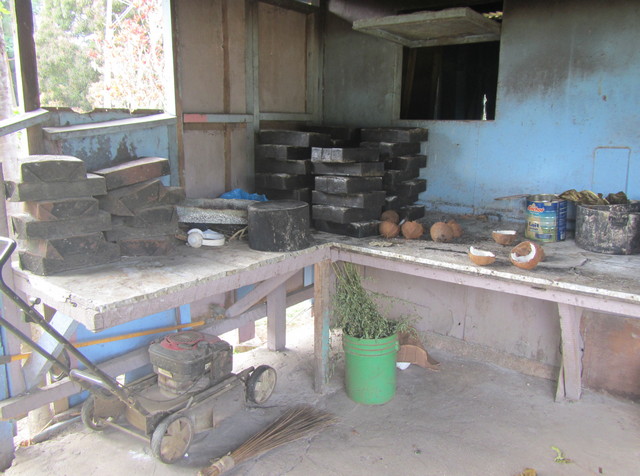
A little further down the road lay Atiu’s telecom mast, phone satellite and TV station. Microwave antennae capture signals transmitted from Mangaia and Mitiaro and boost them onwards. Atiu’s TV channel can receive several signals, but can only transmit one signal at a time to island residents – so locals have to be patient and cooperate with each other, taking turns to watch their favourite TV programmes. At least that avoids TV ratings competition…
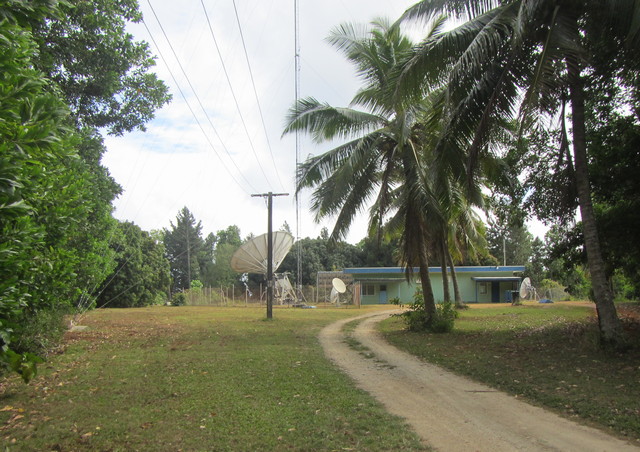
Our next stop was at a coffee plantation, formerly owned and run by German growers Juergen Manske-Eimke and his wife Andrea. Their business ended when Juergen sadly died in mid-2015, but the coffee bushes were continuing to grow well. Missionaries first brought coffee to the island, and it became a cash crop in the 1950s. The island’s calcium-rich soils lend Atiu coffee a unique flavour, and despite fluctauations in the coffee trade it continues to be grown and sold. The production of Atiu Island Coffee is now headed up by local woman Mata Arai, using hand picking and roasting with coconut cream, giving this coffee a very special taste.
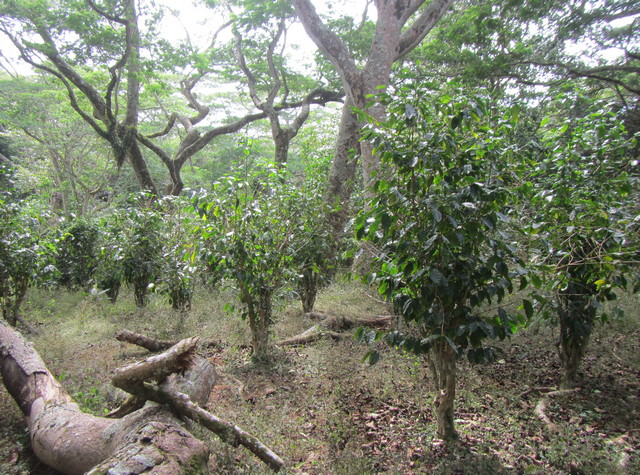
Coming through the forest we emerged near the island’s airport. While we watched a Pacific golden plover or toretoreā (Pluvialis fulva) pottering about on the runway, Marshall related how an Air Raro plane had a tyre blowout while taxiing on the crushed coral runway a year or so previously. It must be interesting being an Air Raro pilot! A request had gone in for a new tarmac runway to replace the crushed coral surface. Locals had already begun clearing the site and bringing in machinery, only waiting for funding to be found so that they can begin work. Marshall also showed us two massive blocks of coral (each half as big as the pick-up we were riding in) that had been thrown up onto the runway by the sea during a cyclone in 2005.
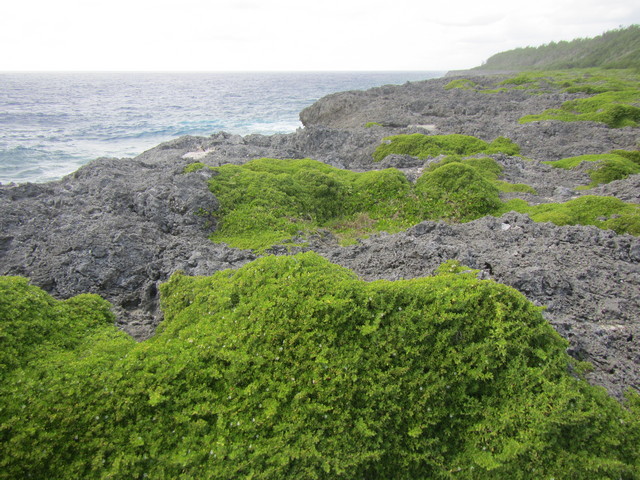
Southeast of the airstrip we hopped out of Marshall’s pick up to walk over the makatea to the cliff tops on Atiu’s northeastern edge. Just as we’d found the day before when trekking to Anatakitaki, walking on makatea requires concentration. We were stepping over a fossilised coral reef, its rugged and undulating topography mirroring the choppy Pacific swell surging below us. Hardy plants such as ngau (Creeping half-flower, Scaevola paulayi) wedged their roots into the crevices, growing in wind-resistant mats and weathering the salt spray.
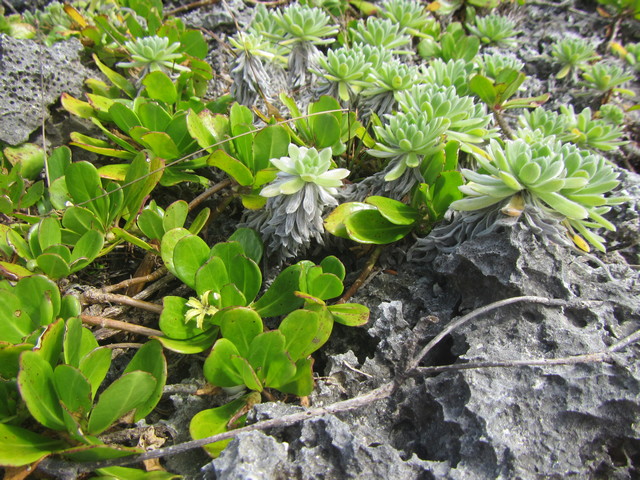
It wasn’t easy to picture the sharp crags of limestone that we were walking on as an undersea coral reef, millenia ago… Until I crouched down and looked closer, when an ancient tropical ocean landscape became revealed. I saw intricate patterns of many different coral species: hieroglyphics written in the skeletons of billions of long-dead coral polyps. There is always something mesmerising to me about being confronted with the geological evidence of deep time. Humanity takes itself and its everyday concerns so seriously… But really we’re just a recent blip on the evolutionary timeline. For some reason I find this weirdly comforting.
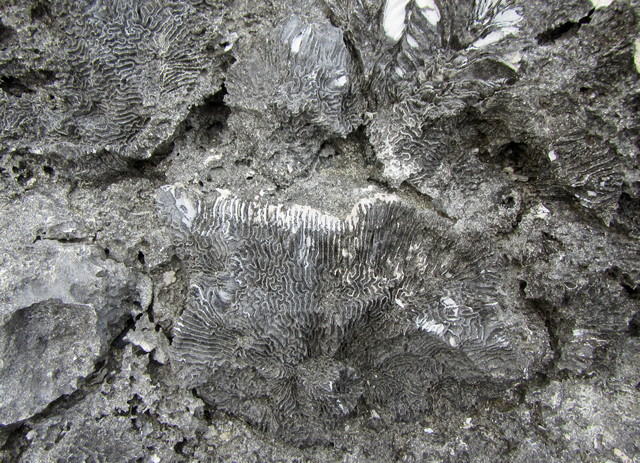
Driving soutthest took us along the coast road that runs all the way around Atiu, with its handy signs at intervals indicating the distance to landmarks in either direction. Our next stop was at Oneroa Beach, a beautiful little cove with pinkish coral sand used by Marshall and Jéanne’s family. The edge of the reef is very close here, the wild Pacific surf rolling just a few metres out.
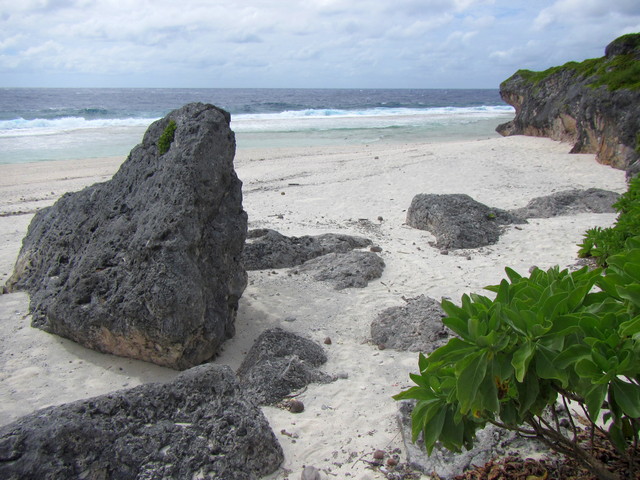
After a brief but lovely wander along Oneroa Beach, we returned to the truck and drove on along the coast road to Takauroa Landing on the island’s southern edge. This was the scene of an epic battle between Atiu warriors and invaders from Tahiti. History tells of how a Tahitian traveller shipwrecked on Atiu was cared for and nursed back to health by Atiu folk, but then travelled back to Tahiti… Only to return to Atiu with two vaka (war canoes) loaded with two hundred Tahitian warriors! Fortunately for the locals they were able to ambush the Tahitian invaders as they tried to access the island’s interior through a narrow passage in the makatea: after a pitched battle the Atiuans won. The ungrateful Tahitian who’d led his fellows back to Atiu was reputedly hunted down, fought with by the ariki, and killed. (And allegedly eaten, which seems fair enough.) Two marae at Takaroa Landing mark the burial sites of all those warriors who fell in battle defending their island.
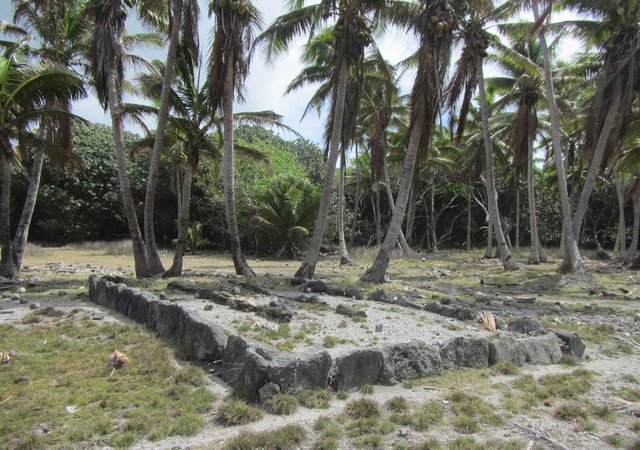
Here in the southern part of the island, the makatea is pretty impenetrable, with its combination of thick tangled undergrowth and forest on top of sharp craggy fossilised limestone. Marshall related how a local lawbreaker evaded arrest by local police for some time by hiding out in the makatea. After a few weeks however the wrongdoer turned himself in, finding living in the challenging landscape of the makatea too difficult!
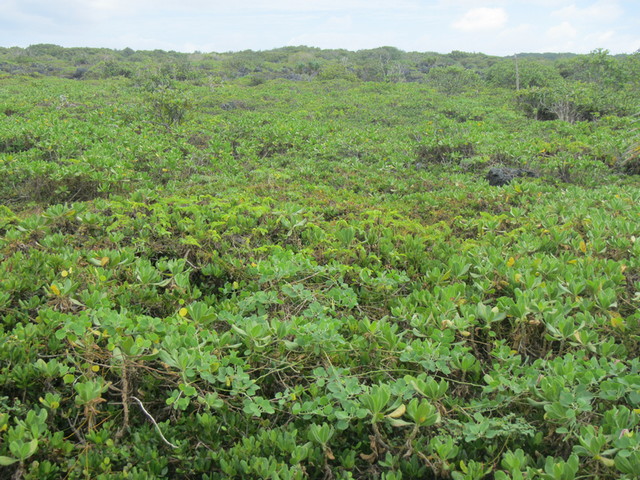
A little further on into the coastal forest Marshall stopped the truck to show us a fruits from a boxfruit tree (Barringtonia asiatica or ‘utu). The seed from the centre of ‘utu fruits can be ground up or chopped to release a poison, which paralyses fish if the ground seeds are scattered into the sea. Formerly used for fishing in the coral lagoon, this is now illegal: a local man was recently caught using ‘utu poison in this way and fined $500 (after having been warned several times not to do this).
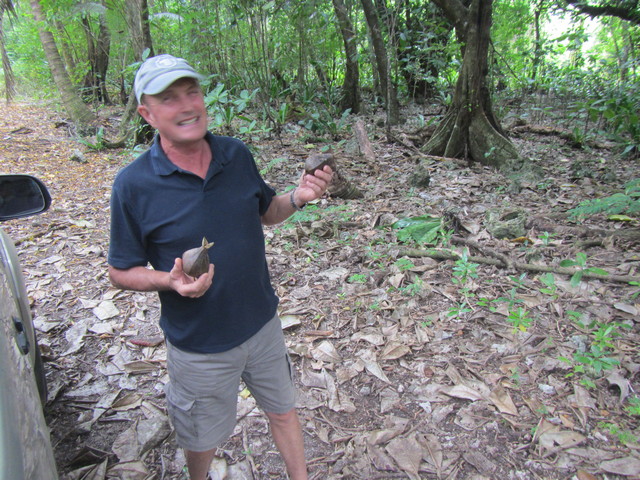
Heading now up the western side of the island we stopped at Taungaroro Beach, which like Oneroa was beautiful and deserted. Walking through the sand and looking out to the Pacific waves splashing against the coral reef, I felt a little like Robinson Crusoe (although hopefully without the white imperialist overtones).
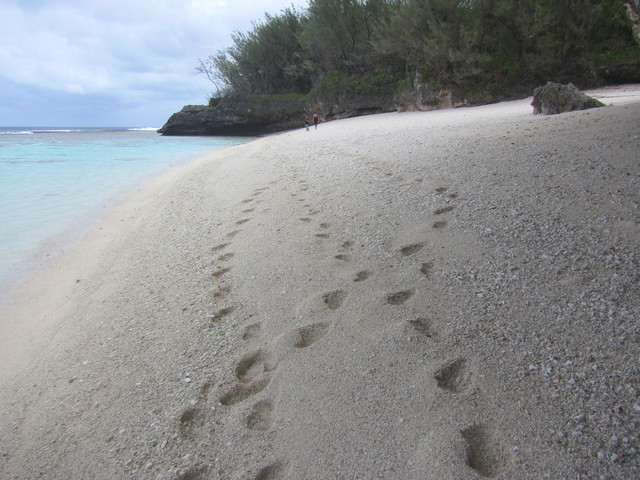
It’s not just coral which makes up the pinkish sands fringeing these islands: billions of fragments of seashells too are rendered down by the action of waves and wind to create the lovely beaches that are such an iconic element of Pacific islands. I spent a happy half hour wandering and gathering seashells, including many cowries or pōre‘o. In many places in the world cowries have traditionally been used as currency: in the Cook Islands they were favoured more for jewellery, especially to convey status to the wearer.

Taungaroro was also the spot where we had a picnic lunch, to fortify us after our morning’s exploring. Banana muffins, fresh fruit salad with papaya and guava and pawpaw sprinkled with grated coconut, and a nice cup of tea to wash it all down: perfect.
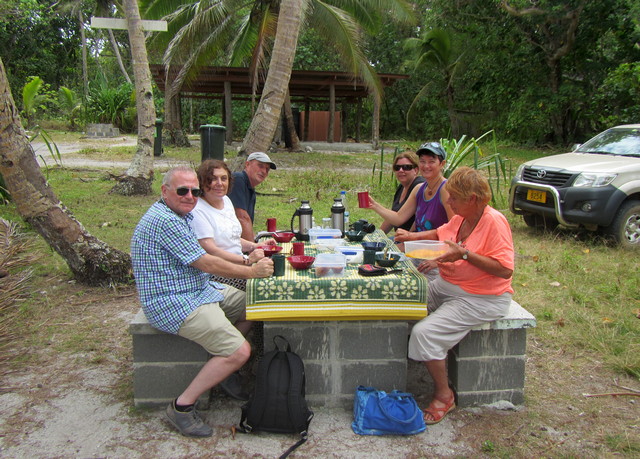
After lunch I went wandering a little way into the coastal forest, to admire the tropical trees with their buttressed roots and epiphytic ferns growing in nooks amongst the branches. Atiu was a delight to a plant nerd like me: while my tropical botany knowledge wasn’t good enough for me to identify many species, I still felt happily at home in this green growing ecosystem, relatively unimpacted by tourism.
The plan was for us to continue on up the coastal road northwards to Oravaru landing – but our plans were temporarily foiled by a roadblock in the form of a fallen tree. We detoured via Ngatiarua village and back out to the coast by another route, finally reaching Oravaru on the west coast.
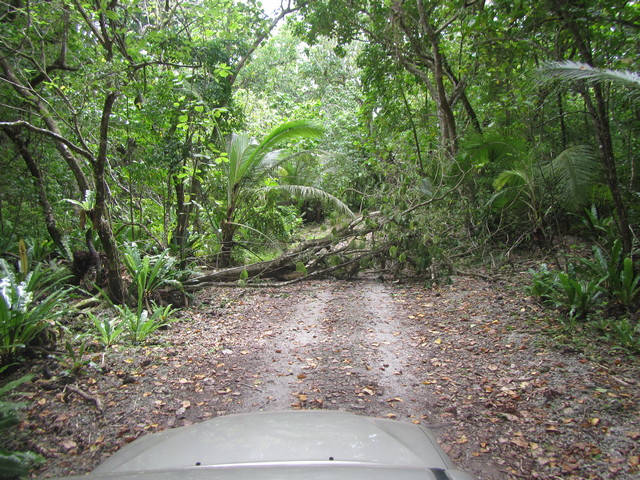
If you search on the internet for information about the Cook Islands’ colonial history, it describes how Spanish explorers sighted Pukapuka and Rakahanga (in the northern islands group) in 1595 and 1606; then Captain James Cook sighted other islands in the 1770s; followed by Captain William Bligh in 1789 (whose tyrannical captainship led to the mutiny on his ship the Bounty). The name ‘the Cook Islands’ was conferred by Russian navigator Adam Johann von Krusenstern in his 1823 Atlas de l’Ocean Pacifique, in honour of the surveying and mapping done by Captain James Cook: previously they were named the Hervey Islands after a British Lord of the Admiralty.
Ironically Cook himself never landed on Atiu during his voyage on the ship Resolution: instead one of his officers, Lieutenant John Gore went ashore in 1777, accompanied by the ship’s doctor, botanist and three boatloads of crew. They were met by some two thousand Atiuan warriors and people lining the clifftops, with full body tattoos and carrying spears – no doubt an intimidating sight. Bear in mind that on one of Cook’s previous expeditions to Tahiti, John Gore was the first person ever recorded to shoot and kill an indigenous Pacific Maori person, after an altercation over a piece of cloth. These were not casual explorers but the vanguard of a powerful military empire, intent on mapping and colonising what they regarded as ‘uncivilised’ territories, largely ignoring the rights of the indigenous people already living there.
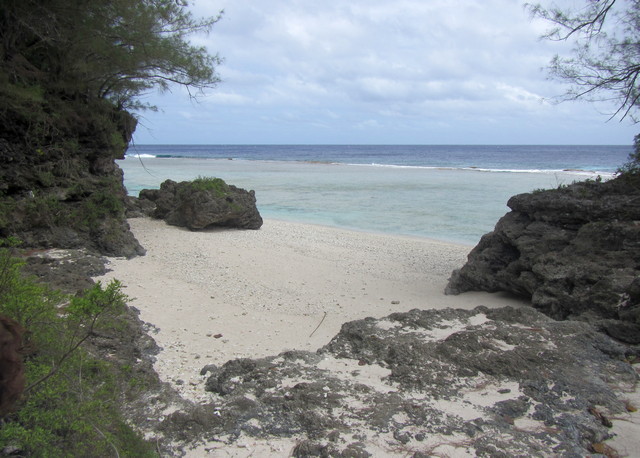
Gore’s party were taken inland by the Atiuans to the Orongo marae and cave of the warriors, which would have been an impressive and unsettling sight. It’s said that the landing party’s Polynesian interpreter saw a prepared umu pit (earth oven) but no animal carcasses, and assumed that this meant that they were on the menu! This proved not to be the case however: after being ceremonially introduced to the ariki and being the subject of several hours of close curiosity from the Atiuans, the landing party was allowed to return to their ship.
Marshall told us of an ancient local tradition, that when a new baby boy was born the child was taken to the tribal priest at the Orongo marae, who would wrap the baby up in leaves and leave him on the marae altar overnight. In the morning if the baby had managed to break free of his leaf swaddling he would be raised as a warrior at the Orongo marae and taught how to fight. If the baby was still wrapped in the leaves, the child would be returned to his parents and grow up to be a fisherman or planter.
Orongo marae was also the final resting place of the skulls of the island’s ariki, as well as those of great and heroic warriors. It was and still is a sacred place. In the 1960s two Mormon missionaries visiting the island were disrespectful and foolish enough to remove a skull from the Orongo cave, intending to take it with them to Rarotonga… But the woman missionary died before they got there. The skull was swiftly returned and replaced at Orongo.
The archaeology and history of pre-colonial times in the Cook Islands was seemingly only just beginning to be shown the interest and respect it deserves, at the time of my visit in 2015. I was reminded of Ngaa’s determined labours on Aitutaki to preserve and pass on the culture and history of his people. Compare this with the wealth of research and fieldwork that has been done on ancient cultures such as Egypt, Greece and South America. I suspect that partly this is due to the legacy of colonialism, and the fact that we white Europeans are still reluctant to engage with the reality of our colonial history: a history that contains a great deal of brutality and exploitation, and which persists to this day in some people’s colonial or white supremacist mindset. Too often I’ve heard white people try to diminish the impact of colonialism by saying “Explorers then didn’t know any better”, or “Every European nation was doing the same thing”, or even “These cultures had plenty of their own problems before we came along – what about their inter-island wars and cannibalism?” These defensive responses are missing the point: white colonial powers invaded lands, imposed Christian religion (with all its guilt-ridden and problematic dogma), took whatever resources they fancied, and ruthlessly eradicated many indigenous people through military force and disease. If someone did that to Britain we’d call it an act of war.
When we returned to Marshall and Jéanne’s home, I found a wonderful book on their shelves: Akono’ango Maori: Cook Islands Culture, by Ron Crocombe. Browsing through it I came upon a remarkable photograph taken circa 1904, titled ‘Ngatiarua on Atiu in old time dress‘. The dignity and pride of these muscled men standing with their heavy spears, gazing directly into the camera lens, shone out of the page.
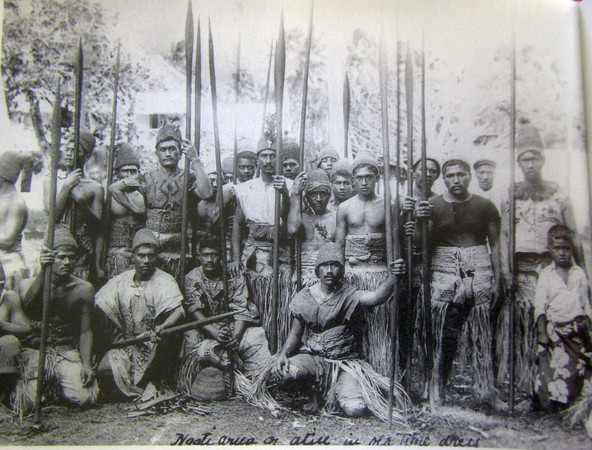
As a privileged white tourist in the South Pacific, I felt enormously grateful to have the opportunity to travel in these beautiful islands, and to meet the friendly and generous people who lived there. This friendliness and generosity is even more remarkable, given the explotiation of their lands and people ever since white colonisers first began occupying their territories. Writing this blog is my effort to show my gratitude to all the Cook Islands and South Pacific Maori and Polynesian people who welcomed me into their homes; and to raise awareness as far as I can of the destructive impact of European colonialism, and the importance of honouring South Pacific culture. It’s vital too that we take rapid steps to limit climate change caused by our industrialised nations, the latest colonial legacy to threaten the safety and future of Pacific island peoples.
I had only one more day to spend on Atiu. I could’ve happily spent another month there (and not just because of Marshall’s mouth-watering cooking!). I felt happily at home on this quiet little island with its rich history and diverse wildlife; its rugged makatea and green forest; and the shell-scattered beaches and sacred marae, freighted with memories and meaning.
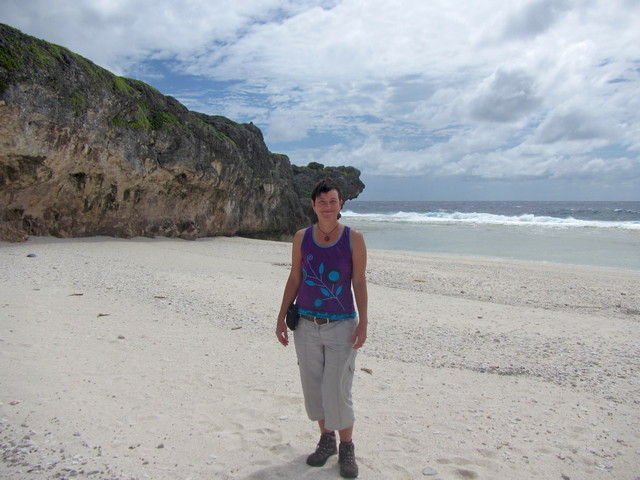
As Rowanleaf I write, photograph, teach and sing about the world, for the world. If you enjoy my work and would like to help support me to keep on doing it, please consider buying me a coffee at KoFi, or making a regular donation via Patreon. The links are here below: much gratitude to all those who have encouraged and supported me thus far. <3
Rowanleaf on KoFi (one-off donations)
Rowanleaf on Patreon (monthly donations)
Coming up next time, in South Pacific Adventure part 9:
Aliens, natives, lorikeets, flycatchers and noddies: travels with Birdman George
in Enuamanu, Land of the Birds.


